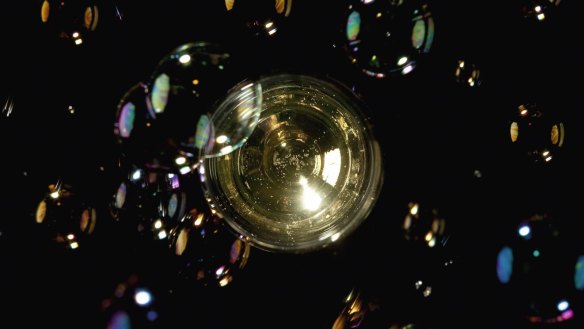A beginner's guide to champagne styles (and food pairings)

- Why you should be drinking champagne in winter, too
- Five champagne and food pairings to try in Melbourne
- Where to drink champagne in Sydney this winter
From brut to vintage, there's a style of champagne to suit most palates.
Champagne is for sharing and I reckon having friends over and popping a cork is a great opportunity to try something new. If everyone brings over a different style of champagne, it mitigates the cost and allows for great discussion around diversity and personal preference.
This a brief guide to champagne styles with a few food matching ideas for winter. Learning about champagne is never a punishment.
Brut is a dry style of champagne. The word "brut" indicates the champagne has been bottled almost in its natural (brut) state, requiring only the smallest addition of sweetness to bring out its aromatic expression. More than 90 per cent of champagne is categorised as brut and the term is defined as less than 12 grams of sugar per litre. Game meats such as partridge, turkey, pheasant and goose work particularly well with champagne in winter, served simply as a classic roast with braised vegetables. I've also discovered that a roast turkey, cheese and mushroom toastie is a great combination with brut.
Extra brut is a very dry style of champagne that indicates almost no sugar is added. The style is usually very light and fresh, and is one of the fastest-growing categories imported to Australia. French fries are one of the best combinations with champagne. (Seriously, the best.) The fattiness and saltiness of the chips with brut or extra brut is an easy opportunity to enjoy a winning food and champagne experience.
Demi sec and doux are sweeter styles of champagne. They are terrific with dessert and spicy or fatty foods such as foie gras, but these styles are rarely seen in Australia, making up less than 1 per cent of total imports.
Blanc de blancs is blended only from white grapes (typically chardonnay) and might be described as light, fresh and dry. A chalky, minerally blanc de blancs is a top match with umami-rich Japanese food and natural oysters.
Blanc de noirs is blended from black grapes (pinot noir and/or meunier) and potentially described as having more body and vinous (wine-like) qualities. If I could only eat one thing with a blanc de noir style it would be the saltimbocca at Il Baretto in Surry Hills, my local restaurant. Veal with prosciutto and sage leaves served with roast potatoes is incredible with this style of champagne. A very sophisticated combination. Oysters kilpatrick are also excellent with a champagne high in pinot noir.
Champagne rosé is champagne that has had red wine added (assemblage) or has had contact with the skins of the black grapes. Rosé styles of champagne come in almost every shade of pink from pale amber and copper through to lush and luminous ruby red. The rosé category is growing in Australia and fans of the style love it for its ability to match with a range of food from seafood to beef. In winter, I like to drink it with slow-roasted pork, parsnip and cabbage.
Non vintage (NV) should really be thought of as "multi-vintage", as each NV champagne is made up of wine from different years and vineyards. Non-vintage is generally known as "house style" and is the largest category in champagne. It is often the most important champagne a winemaker will create each year.
Vintage is a champagne where all the grapes are sourced from a single year. The vintage champagnes are often aged in the cellars of Champagne for some time (often years) as the wine gains complexity in the bottle. In Champagne, there is a saying that man makes the non-vintage, but the heavens make vintage. Roast duck is an absolute cracker with champagne, especially vintage.
John Noble is the director of the Champagne Bureau of Australia.